One of the ultimate masterpieces of one of the most renowned artists of the Baroque period can be found on public display in the artist’s hometown.
Let’s take a closer look at some of the most interesting facts about The Elevation Of The Cross by Peter Paul Rubens, an amazing Baroque painting by one of the most famous and influential Flemish artists in history!
1. The original painting was completed in the early 17th century
The Elevation of the Cross, also sometimes referred to as “The Raising of the Cross,” is an immense painting created by Flemish painter and diplomat Peter Paul Rubens (1577-1640). He can easily be described as one of the most influential Baroque artists in history.
The work was completed between 1610-1611, which means that the painter was in his early 30’s. This was a busy time for the painter as he not only got married to his first wife Isabella Brant in 1609, but he was also one of the most sought-after painters in Europe at this time.
When he received the commission, he already spent 8 years in Italy (between 1600 and 1608) and was an independent master in the city of Antwerp for well over a decade.
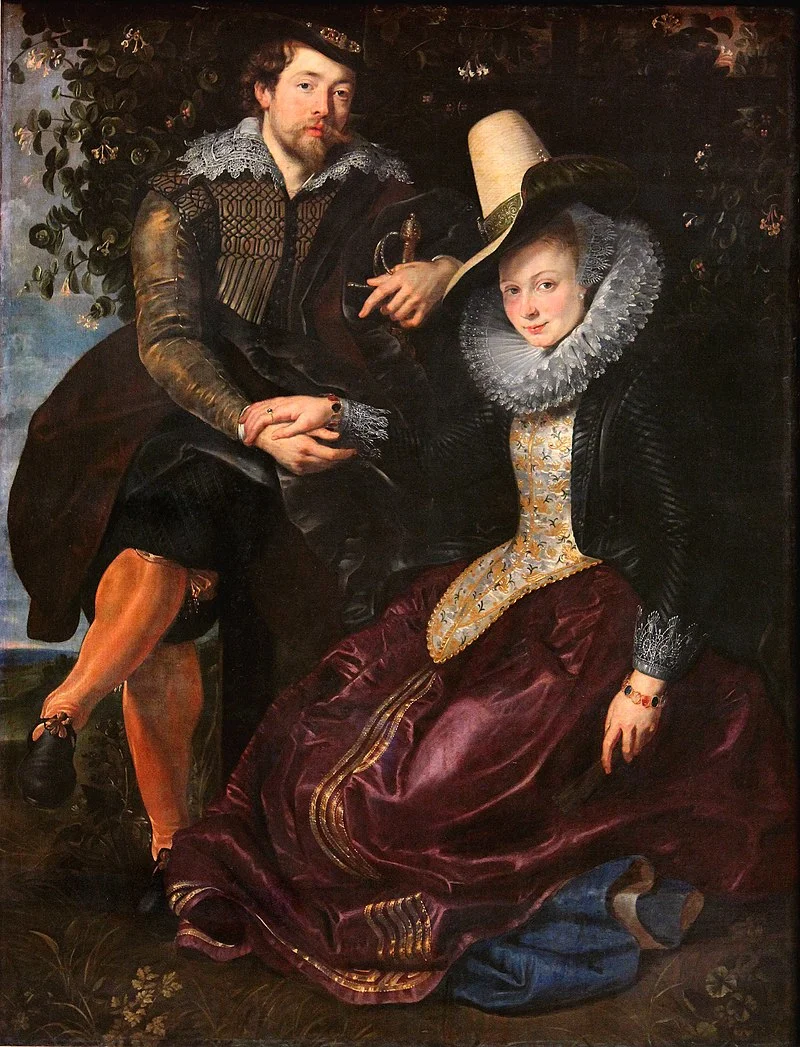
2. It’s an immense work of art that features 3 panels
The scale of this oil on wood painting is quite amazing as it has dimensions of 462× 341 centimeters (182 × 134 inches). He did spend time in Venice, though, so he already saw monumental works by Paolo Veronese such as The Wedding at Cana.
This painting is also a triptych, which means it consists of 3 different panels. The middle panel depicts Jesus Christ on the cross as it’s being lifted into position by a number of muscular executioners. The other panels depict horrified onlookers, Roman soldiers, and fellow condemned criminals about to be crucified as well.
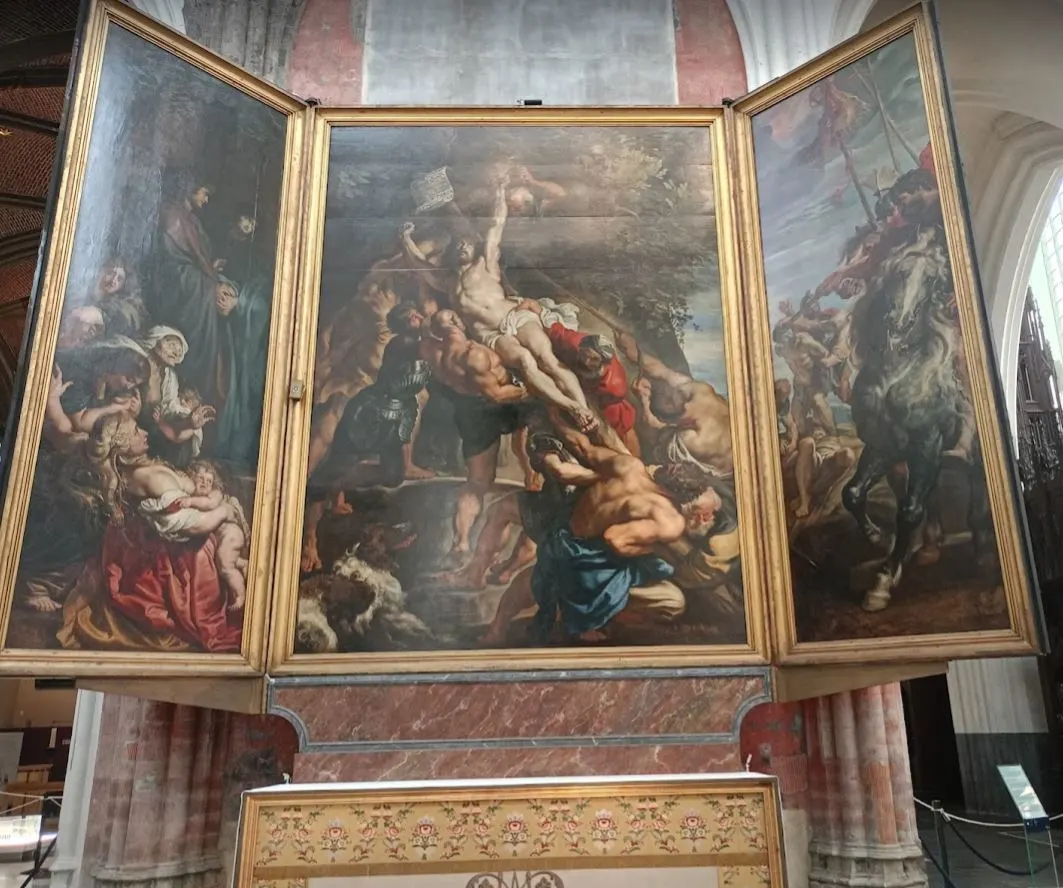
3. There’s a second and much smaller version from 1638 as well
One of the most remarkable facts about The Elevation of the Cross by Rubens is that it actually the name of 2 different paintings. The original version of 1610-1611 was replicated by Rubens on a much larger scale nearly 2 decades later in 1638.
The second version is an oil on paper painting which is quite a bit smaller and has dimensions of 70 × 131.5 centimeters. This version also consists of a single painting and served as the “modello” for the work of another Flemish artist called Hans Witdoeck (1615-1642), an engraver and member of Ruben’s workshop.

This painting eventually ended up in the permanent collection of the Art Gallery of Ontario in Toronto, Canada, and is on public display at this museum.
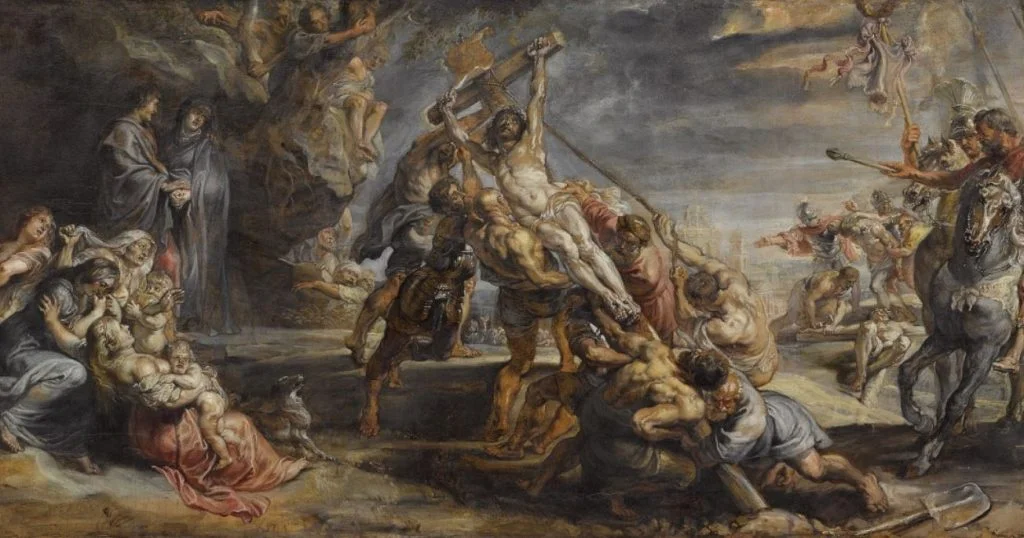
4. It was commissioned to decorate a church in Antwerp
The painting was commissioned by a rich spice merchant in Antwerp named Cornelis van der Geest (1575-1638). This man was also involved in the management of a famous church in Antwerp called the “St Walburga Church,” and most importantly, a patron of the arts in the city.
This church had a rich history in the city as it dated back all the way to a chapel originally completed in 727 A.D. By the time that the painting was commissioned it was one of the most prominent churches in the city. Unfortunately, the church fell victim to the events following the French Revolution and ended up being demolished in 1817.
The reason why the painting was so large is that it was originally positioned above the High Altar of this Gothic Cathedral. It was also positioned a bit higher than usual, something that not only made it visible to any visitor the moment they entered but also emphasizes the importance of the work.

5. The central panel is an early example of dramatic Baroque art
The naturalist elements of the Renaissance artists and Late Renaissance artists (Mannerism) were thrown out of the window by the Baroque artists who aimed to increase the level of drama in their works.
This is clearly emphasized in the central panel in which multiple extremely muscular men seem to have all the trouble in the world to lift the cross in position.
This is an early example of the exaggerated dramatic effects that would eventually define not only Ruben’s works but also the entire Baroque era.

6. There are clear influences from Rubens’ extended period in Italy
Rubens created this painting just a few years after he had returned from an extended journey all across Italy. This brought him to Venice, where he saw the works of the most famous artists of the Venetian school such as Veronese, Titian, and Tintoretto.
He also went to Rome where he saw the works of Caravaggio and Michelangelo. The latter’s “The Last Judgement” in the Sistine Chapel in Rome had clearly an influence on this painting regarding the muscular bodies.
The light effects were clearly influenced by the dramatic use of chiaroscuro (the contrast between light and dark) of Caravaggio, more specifically his work “The Entombment” (1603-1604) which was completed just a few years earlier.
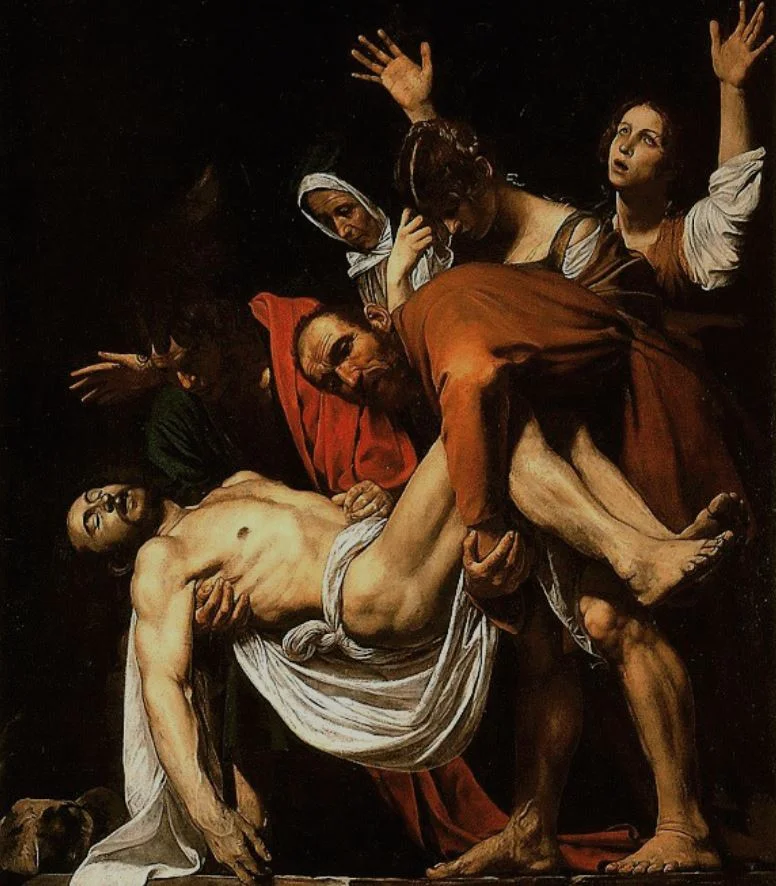
7. The three panels form a relatively harmonious ensemble
The left panel depicts horrified onlookers including the Virgin Mary and Saint John. The right panel depicts Roman soldiers who are preparing criminals who are about to be nailed to the cross as well and be put next to Jesus.
Even though these are 3 different scenes, they are all related to each other and form a harmonious work of art when put together.
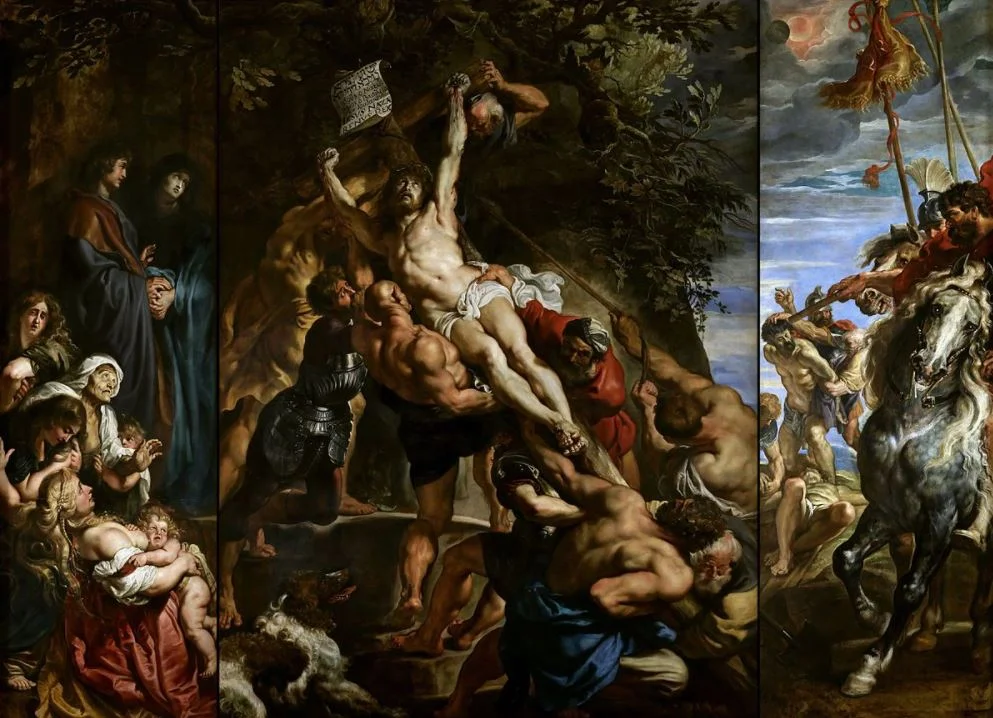
8. The artist had some help with this painting from his workshop
As soon as he became an independent artist, Rubens set up a workshop in his hometown of Antwerp. This allowed him to produce paintings on a massive scale, especially since he was also a court painter and didn’t have to register his pupils at the Guild of Saint Luke.
This also means that it’s not exactly sure with all of his works what stake he eventually had in each painting. With this painting, it’s assumed that his share consisted of:
- Create a “modello“, a smaller version of the eventual work which was critiqued by the patron.
- Make drawings of human figures using real models.
- Put the final touches on the painting when his assistants were finished.
This means that most of the painting was probably painted by members of his workshop, even though he had the final hand in the details.
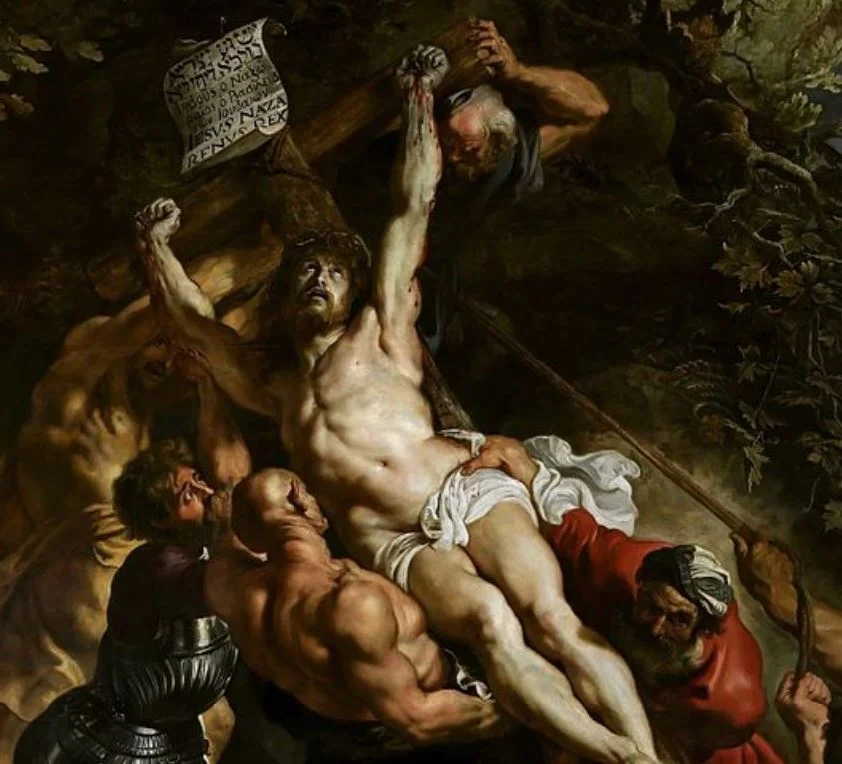
9. It was briefly moved to France with another Rubens painting
The painting hung in the church it was commissioned for, the Church of St. Walburga in Antwerp, until the French Revolution broke out in the late 18th century and Napoleon came to power in the aftermath of this important event.
The Antwerp diocese was abolished in 1798 and the church ended up being turned into a warehouse for a period of time. The painting eventually ended up being transported to Paris, France, together with “Descent from the Cross,” a follow-up painting created by Rubens between 1616 and 1617.
The latter work still resides in France as it’s part of the collection of the “Palais des Beaux-Arts de Lille“, a museum in this city in Northern France.
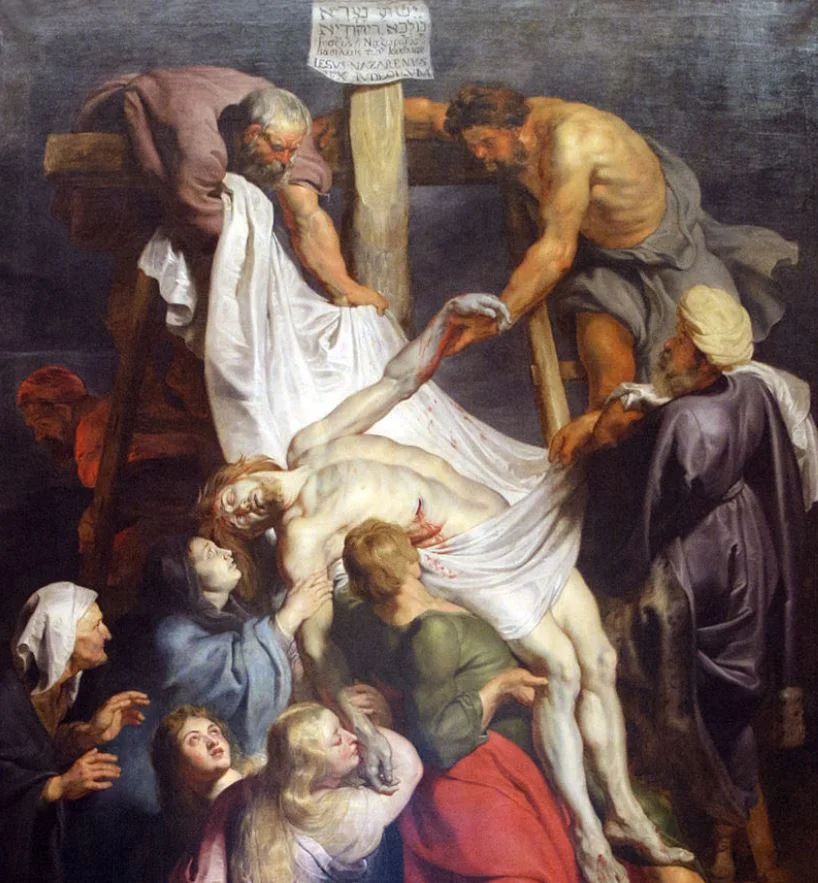
10. The painting is on public display in the cathedral of Antwerp
So what happened to The Elevation of the Cross by Rubens?
This work is considered to be one of Rubens’ ultimate masterpieces and was eventually brought back to Antwerp following Napoleon’s final defeat in 1815.
The work can now be admired in a church in the city, the Cathedral of Our Lady, the magnificent main cathedral in Antwerp which was completed between 1352 and 1521. This means that it still resides in Ruben’s hometown today!
